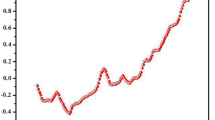Abstract
Many techniques to inactivate or remove biofilms in a wide variety of applications have been developed. Most of these techniques have been applied to biofilms at their initial stage of growth, since they are generally difficult to eradicate once established. The removal of established biofilms has received relatively little attention. In this paper, we report the effectiveness of periodic jets of carbon dioxide aerosols (a mixture of solid and gaseous CO2) to remove Escherichia coli (XL1-blue) biofilms of different ages (up to 3 weeks) on silicon surfaces. The biofilms were not immersed in liquids after growth/rinsing and were treated with the CO2 aerosols. The CO2 aerosols were generated by the adiabatic expansion of high-pressure CO2 gas through a nozzle. The surface area of the biofilms was measured from fluorescent images before and after applying the aerosols for 11, 20, and 30 cycles (each cycle: 8 sec), to compute the removal efficiency. The removal efficiencies decreased with increasing growth time and for the 3-week-old biofilms, they ranged from 91.5 to 99.6% within 4 min. This technique was highly effective for removing both fresh and old biofilms, but some of the biofilm debris such as growth media remained. Further, this CO2 aerosol technique was compared with other removal techniques.
Similar content being viewed by others
Refrerences
Simões, M., L. C. Simões, and M. J. Vieira (2010) A review of current and emergent biofilms control strategies. LWT-Food Sci. Technol. 43: 573–583.
Meyer B. (2003) Approaches to prevention, removal and killing of biofilms. Int. Biodeterior. Biodegrad. 51: 249–253.
Auerbach, I. D., C. Sorensen, H. G. Hansma, and P. A. Holden (2000) Physical morphology and surface properties of unsaturated Pseudomonas putida biofilms. J. Bacteriol. 182: 3809–3815.
Jain, A., Y. Gupta, R. Agrawal, P. Khare, and S. K. Jain (2007) Biofilms a microbial life perspective: A critical review. Crit. Rev. Ther. Drug Carr. Syst. 24: 393–443.
Chen, X. and P. S. Stewart (2000) Biofilm removal caused by chemical treatments. Water Res. 34: 4299–4233.
Hong, S. H., J. Jeong, S. Shim, H. Kang, S. Kwon, K. H. Ahn, and J. Yoon (2008) Effect of electric currents on bacterial detachment and inactivation. Biotechnol. Bioeng. 100: 379–386.
Nandakumar, K., H. Obika, A. Utsumi, T. Ooie, and T. Yano (2004) In vitro laser ablation of laboratory developed biofilms using an Nd:Yag laser of 532 nm wavelength. Biotechnol. Bioeng. 86: 729–736.
Bott, T. R. (2000) Biofouling control with ultrasound. Heat Transf. Eng. 21: 43–49.
Bayoudh, S., L. Ponsonnet, H. Ben Ouada, A. Bakhrouf, and A. Othmane (2005) Bacterial detachment from hydrophilic and hydrophobic surfaces using a microjet impingement. Colloid Surf. A-Physicochem. Eng. Asp. 266: 160–167.
Gibson, H., J. H. Taylor, K. E. Hall, and J. T. Holah (1999) Effectiveness of cleaning techniques used in the food industry in terms of the removal of bacterial biofilms. J. Appl. Microbiol. 87: 41–48.
Sherman, R. (2007) Carbon dioxide snow cleaning. Particul. Sci. Technol. 25: 37–57.
Kang, M. Y., H. W. Jeong, J. Kim, J. W. Lee, and J. Jang (2010) Removal of biofilms using carbon dioxide aerosols. J. Aerosol Sci. 41: 1044–1051.
Cha, M., S. Hong, M. Y. Kang, J. W. Lee, and J. Jang (2012) Gasphase removal of biofilms from various surfaces using carbon dioxide aerosols. Biofouling 28: 681–686.
Dwidar, M., S. Hong, M. Cha, J. Jang, and R. J. Mitchell (2012) Combined application of bacterial predation and carbon dioxide aerosols to effectively remove biofilms. Biofouling 28: 671–680.
Simmons, R. B., L. J. Rose, S. A. Crow, and D. G. Ahearn (1999) The occurrence and persistence of mixed biofilms in automobile air conditioning systems. Curr. Microbiol. 39: 141–145.
Morris C. E., J. M. Monier, and M. A. Jacques (1997) Methods for observing microbial biofilms directly on leaf surfaces and recovering them for isolation of culturable microorganisms. Appl. Environ. Microbiol. 63: 1570–1576.
Ohasi, A. and H. Harada (1994) Adhesion strength of biofilm developed in an attached-growth reactor. Water Sci. Technol. 29: 281–288.
Hills, M. M. (1995) Carbon dioxide jet spray cleaning of molecular contaminants. J. Vac. Sci. Technol. A 13: 30–34.
Buss, H. L., S. L. Brantley, and L. J. Liermann (2003) Nondestructive methods for removal of bacteria from silicate surfaces. Geomicrobiol. J. 20: 25–42.
Pasmore, M., P. Todd, B. Pfiefer, M. Rhodes, and C. N. Bowman (2002) Effect of Polymer surface properties on the reversibility of attachment of Pseudomonas aeruginosa in the early stages of biofilm development. Biofouling 18: 65–71.
Cerca, N., G. B. Pier, M. Vilanova, R. Oliveira, and J. Azeredo (2005) Quantitative analysis of adhesion and biofilm formation on hydrophilic and hydrophobic surfaces of clinical isolates of Staphylococcus epidermidis. Res. Microbiol. 156: 506–514.
Author information
Authors and Affiliations
Corresponding author
Rights and permissions
About this article
Cite this article
Cha, M., Hong, S., Lee, SY. et al. Removal of different-age biofilms using carbon dioxide aerosols. Biotechnol Bioproc E 19, 503–509 (2014). https://doi.org/10.1007/s12257-014-0044-2
Received:
Revised:
Accepted:
Published:
Issue Date:
DOI: https://doi.org/10.1007/s12257-014-0044-2




